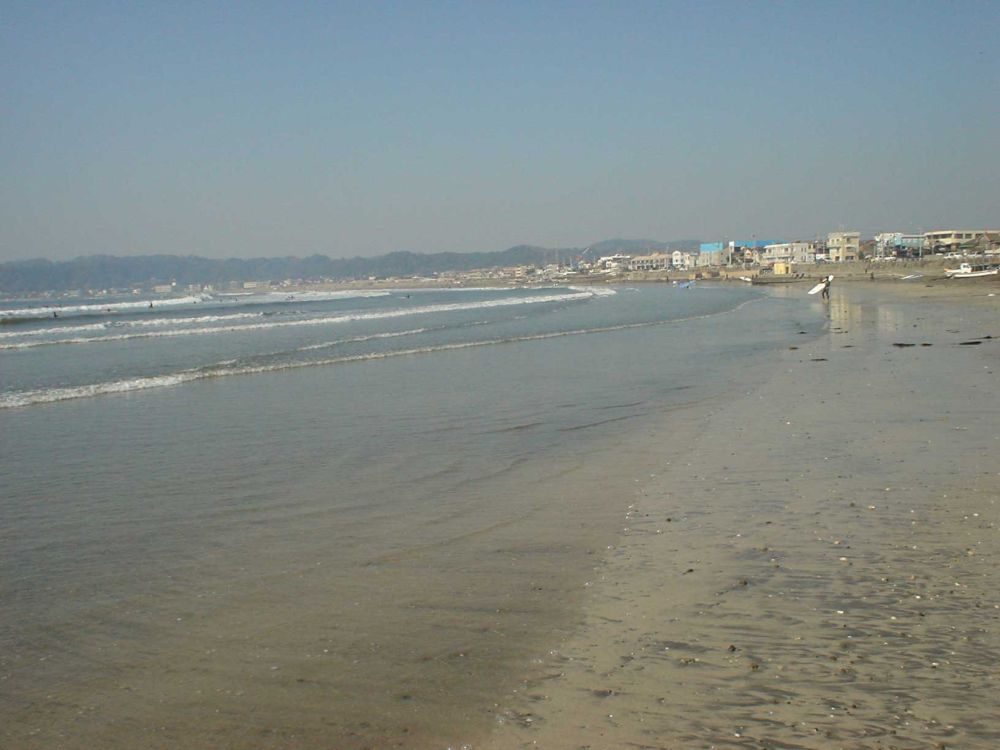

Nestled in the coastal city of Kamakura, known for its rich tapestry of history and culture, Yuigahama Beach has been a draw for visitors for centuries. The allure of Kamakura, once the political center of medieval Japan, has long extended to its beaches. Yuigahama, with its gentle waves and tranquil ambiance, started gaining attention as a leisure destination during the Edo period (1603–1868).
Historically, Kamakura was predominantly a pilgrimage site, with numerous temples and shrines attracting travelers from across Japan. However, the beauty of Yuigahama did not go unnoticed. By the time the Meiji era (1868-1912) arrived, this scenic beach began to emerge as a popular spot for recreation, coinciding with the expansion of Japan's railway network, which eased accessibility for urban dwellers from Tokyo and Yokohama.
The modern history of tourism at Yuigahama Beach saw significant growth in the 20th century, particularly during the post-war period, as Japan’s economy began to boom and domestic leisure activities became more sought after. The beach quickly established itself as a summer retreat for those looking to escape the city heat. Its proximity to notable cultural landmarks, such as the iconic Great Buddha (Daibutsu), Hasedera Temple, and Tsurugaoka Hachimangu Shrine, further boosted its tourism appeal.
By the 1960s and 1970s, Yuigahama beach had become synonymous with the Japanese beach scene, featured in films, songs, and popular culture. The laid-back atmosphere, coupled with the town’s historical allure, secured Yuigahama’s position as a staple destination for both Japanese and international tourists.
In recent years, Kamakura and Yuigahama Beach have seen a resurgence in popularity, particularly among international tourists. This has been partly attributed to the global trend towards cultural and historical tourism, with travelers seeking more authentic experiences. Yuigahama's scenic views, surfing opportunities, and the Zen ambience of nearby temples provide a holistic experience that blends recreation with spiritual discovery.
Furthermore, the trend towards eco-tourism and sustainability has influenced Yuigahama Beach's tourism infrastructure. Efforts are being made to preserve the natural environment while accommodating tourists, which includes measures to protect the coastal ecosystem and promote environmental awareness among visitors. Beach cleanups and eco-friendly accommodations are becoming more prevalent.
The rise of social media has also played a significant role, with Yuigahama Beach's picturesque landscapes being shared worldwide, enticing a new generation of digital-savvy visitors. Additionally, Kamakura's proximity to Tokyo allows it to benefit from the city's continual growth in international tourism, positioning Yuigahama Beach as an easily accessible excursion from the Japanese capital.
Today, Yuigahama Beach remains a vibrant spot, especially during the summer months when the beach is lined with sunken terraces (suna-buro) and bustling beach huts offering refreshments and entertainment. The charm of the beach extends year-round with seasonal activities, local festivals, and a burgeoning food scene that showcases regional flavors.
Whether visitors are drawn by the history of Kamakura, the beauty of Yuigahama Beach, or the enigmatic call of the waves, tourism at this seaside retreat continues to evolve, remaining both a cherished local gem and an enchanting destination for travelers worldwide.